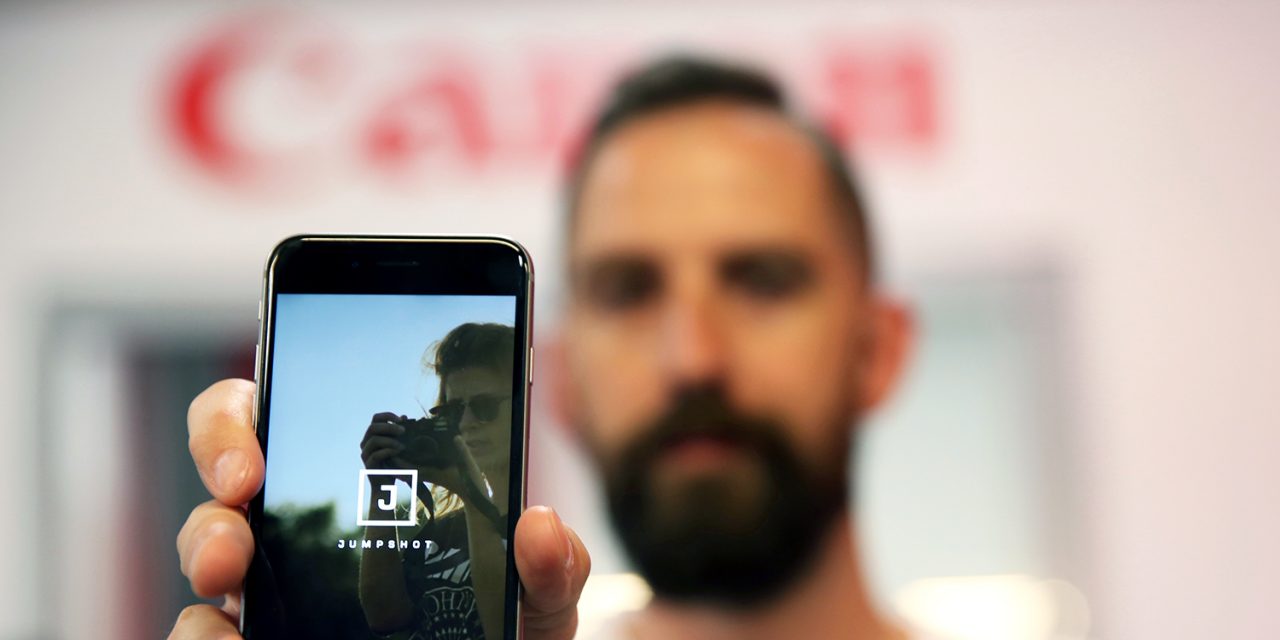The collection of photos on Matt Scobel’s iPhone recently weighed in at 9,000. This week, it’s down to about 1,800.
A more meaningful 1,800, he would add.
What made the difference is Jumpshot, a new, no-charge app developed by Canon Innovation Lab based in the Communitech Hub in Waterloo Region, Ont. Canon released the app – its first consumer product out of the lab – for iOS July 29. An Android version is planned, and users can sign up for updates here.
“It allows you to be really decisive, so the value of the photos you keep goes up,’’ says Scobel, who manages the lab.
Canon has been in the camera business since the mid-1930s. Jumpshot applies some digital-age thinking to an old problem: “You can’t find the photos you really care about because they're buried,” says Scobel.
As users thumb-stroke through images, Jumpshot gives them three basic options: swipe right to keep and left to delete; “share” holds the middle ground.

Jumpshot enables photographers to delete, keep, or share photos with a simple swipe.
(Communitech photo: Anthony Reinhart)
Scobel says this makes it quicker to separate what’s meaningful and memorable from the clutter. Resourcemagonline estimates more than a trillion photos were taken on mobile phones in 2015, which presents a big opportunity for the development of tools to manage the deluge.
Created by a small team of full-time staffers and co-op students, Jumpshot provides a snapshot of what happens in the innovation space at the Hub. Scobel describes the Canon lab as a continuous hackathon churning out ideas and experiments, with turn-arounds measured in two-week stints instead of 48-hour weekends.
Unconventional thinking is the convention in Communitech’s innovation space. Ten large companies — Canon, Canadian Tire and TD Bank Group, to name a few — maintain labs here, purposely keeping them well away from the decision-making webs of their respective corporate headquarters.
Renovations are under way to accommodate teams from another 15 large companies.
The labs thrive under the same conditions that have made Communitech such a successful ecosystem for startups. There are more couches here and fewer walls. Teams mingle. Without revealing company secrets, they share ideas about getting around common problems.
They build, tear down and start again.
“We give (the labs) the space to create, and the tools to evaluate and deliver innovative products and services,” says Craig Haney, Communitech’s Director of Corporate Innovation. “We expose them to talent to achieve all of those.
“It’s messy, but that’s what makes it so productive.”
Canon moved into the Hub almost two years ago. It began as a rapid-prototyping lab, but has since added the expertise to finish products for market.
The team of about a dozen employees always includes two or three co-op students. Their lack of corporate experience is an advantage, Scobel says. Nobody has told them what they can’t do, so they aren’t afraid to experiment.
Out of that, Canon has gained knowledge from more than 30 prototypes and locked down four patents. And it happens in the open, chaotic environment of Communitech’s innovation space, where chance meetings can be pivotal in the development of ideas and products.
Scobel uses a timely Olympic analogy: Elite performers can afford to shut themselves away to prepare for competition.
“But when you’re starting out, it’s important to train with other athletes.”
Top photo: Dustin Duffy, UX engineer with the Canon Innovation Lab at Communitech, shows off the new Jumpshot iOS app.

